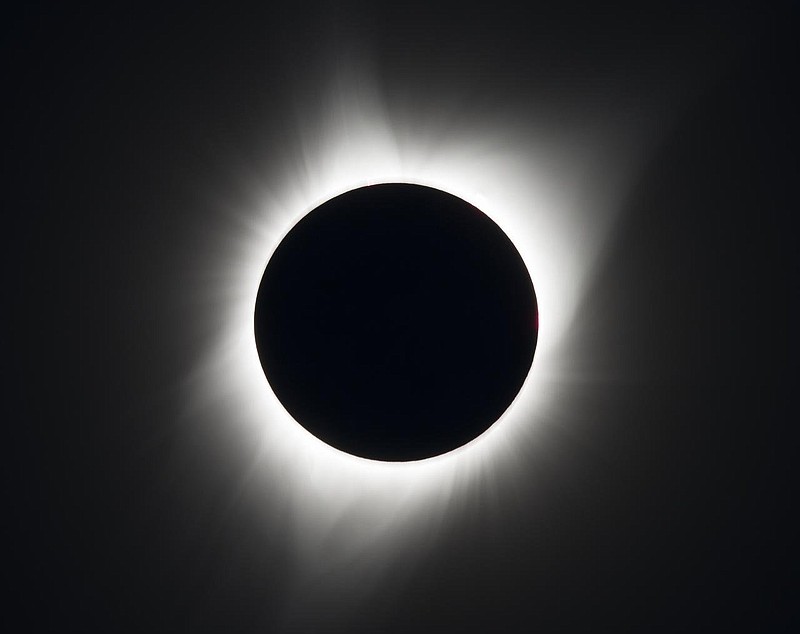On Monday, April 8, 2024, at around 1 p.m., two-thirds of Arkansas will fall within the path of totality of the great North American eclipse that's causing a boom in tourism throughout Arkansas.
The great North American eclipse will be a historic occasion in Arkansas, because only two total eclipses have happened in the state's history. The first eclipse occurred in 1834, two years before Arkansas became a U.S. state.
On Sunday, Nov. 30, 1834, the path of totality crossed the Arkansas Territory from west to east, entering and exiting at the sites now known as Fayetteville and Helena, respectively. Frontiersmen who had settled near Little Rock on the Arkansas River at the center of the territory experienced 1 minute and 36 seconds of totality, while those in what is now Prairie County, Ark., experienced a maximum eclipse time of 2 minutes and 1.8 seconds.
The second total eclipse in Arkansas' history occurred more than 100 years ago on June 8, 1918. That Saturday afternoon, the moon's shadow entered Arkansas near Mena and progressed diagonally across the state to exit near Eudora. Little Rock experienced a partial eclipse of 98% at 6:35 p.m. Unfortunately, the weather was mostly cloudy that day in Little Rock, as was most of the state, so many Arkansans did not witness the eclipse.
The last total solar eclipse happened in North America in 2017, but Arkansas only had partial totality that year. Next year's eclipse will far exceed Arkansas' two previous total eclipses and its 2017 partial eclipse in many ways.
Next year on Monday, April 8, the entire state will have at least 94% obscuration of the Sun as the eclipse runs through the center of Arkansas from southwest to northeast.
Pine Bluff will have 99.081% obscuration. During the great North American eclipse, the longest span of darkness in the U.S. will be 4 minutes and 28 seconds.
In Arkansas, the darkness will last approximately 4 minutes and 20 seconds, nearly twice as long as the darkness of the 2017 eclipse when Arkansas experienced only partial totality. Large cities like Hot Springs, Little Rock and Jonesboro will be within the path of totality.
Although Pine Bluff will not be in the eclipse's path, the event will still bring thousands of visitors and eclipse enthusiasts to the community to experience this phenomenon. Many scientists believe the 2024 eclipse will be the most-viewed in history. So make plans now to enjoy the beauty of the Natural State and avoid the traffic jams by visiting Pine Bluff!
This article is among features at explorepinebluff.com, a program of the Pine Bluff Advertising and Promotion Commission. Sources: www.ExplorePineBluff.com - Arkansas's Great North American Eclipse 2024; www.AREclipse.info - Arkansas' Eclipse History; www.Arkansas.com - Historic Solar Eclipse for Arkansas in 2024.
Ninfa O. Barnard wrote this article for explorepinebluff.com.
